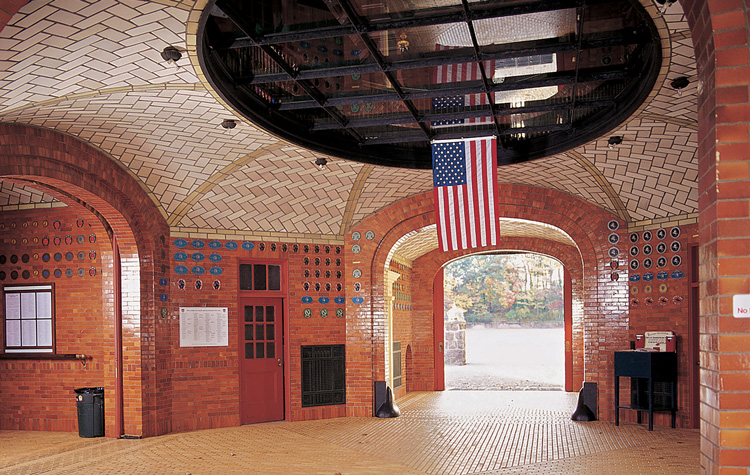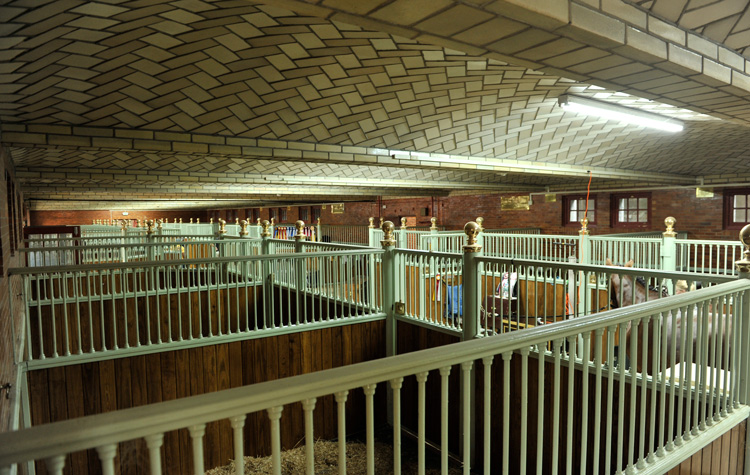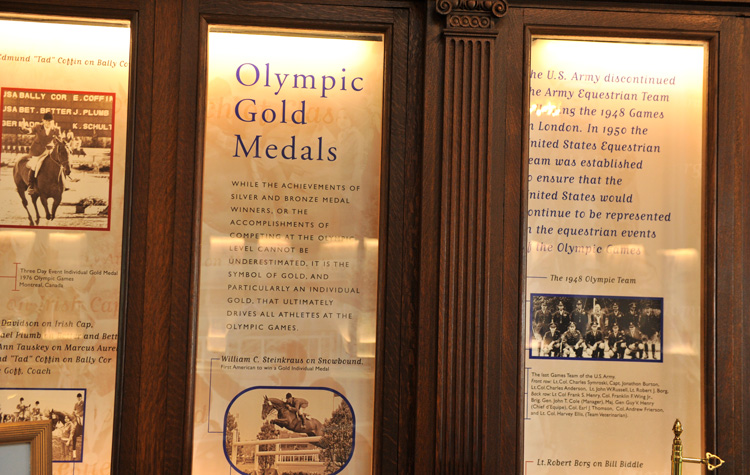The United States Equestrian Team (USET) Foundation supports the competition, training, coaching, travel, and educational needs of America’s elite and developing international high-performance athletes and horses in partnership with the United States Equestrian Federation. Programs are in the eight international equestrian disciplines of dressage, eventing, jumping, driving, endurance, reining, para-equestrian, and vaulting. The foundation trains and supports top U.S. athletes and horses to compete at the Olympic Games, world championships, Pan American Games, and other top international competitions.
The foundation’s home is Hamilton Farm, a beloved equestrian landmark hidden in the heart of bucolic fox-hunting country near Gladstone, New Jersey.
In 1911, Wall Street financier James Cox Brady purchased 180 acres in New Jersey that were only 50 miles outside of New York City for $100 per acre. It was said that Brady initially spent $1 million on developing the property, which he named after his wife, Elizabeth Jane Hamilton Brady. Little did he know that Hamilton Farm would stand for more than 100 years and become a symbol of equestrian sport in the U.S.
 The barns were ultimately completed in 1913. Brady continued to add to his estate, and it eventually reached 5,000 acres and spanned 3 counties. Every animal on the farm was an outstanding specimen of its breed. Dairy and beef cattle, sheep, pigs, chickens, ducks, and geese were raised at Hamilton Farm, but Brady was especially interested in horses.
The barns were ultimately completed in 1913. Brady continued to add to his estate, and it eventually reached 5,000 acres and spanned 3 counties. Every animal on the farm was an outstanding specimen of its breed. Dairy and beef cattle, sheep, pigs, chickens, ducks, and geese were raised at Hamilton Farm, but Brady was especially interested in horses.
The famous main stable (headquarters of the USET Foundation today) was built in 1916 and is made of brick and concrete, reinforced with steel. The ornate interior includes carriage rooms, tile walls, terrazzo floors, and brass fittings. There are 54 stalls, but the barn originally had 40 other rooms including tack rooms, offices, and living quarters.
 Although the United States Equestrian Team was formed in 1950, it had no permanent home for its training operations. In 1961, Arthur McCashin, who lived in the Gladstone area and was a member of the 1952 U.S. Olympic Team, brought USET to Hamilton Farm. The USET show-jumping discipline was led by Bertalan de Nemethy, a former Hungarian cavalry officer and riding instructor at the Royal Hungarian Cavalry School who came to the United States in 1952 and became USET coach in 1955. De Nemethy retained this position until 1980 and was a large part of the team’s show-jumping success during those years. He is credited with bringing a strict training regimen to U.S. riders who had formerly emphasized dressage and gymnastics.
Although the United States Equestrian Team was formed in 1950, it had no permanent home for its training operations. In 1961, Arthur McCashin, who lived in the Gladstone area and was a member of the 1952 U.S. Olympic Team, brought USET to Hamilton Farm. The USET show-jumping discipline was led by Bertalan de Nemethy, a former Hungarian cavalry officer and riding instructor at the Royal Hungarian Cavalry School who came to the United States in 1952 and became USET coach in 1955. De Nemethy retained this position until 1980 and was a large part of the team’s show-jumping success during those years. He is credited with bringing a strict training regimen to U.S. riders who had formerly emphasized dressage and gymnastics.
“What he found with the team were riders that had done showing and riding a lot, but didn’t have the foundation and the fundamentals of riding,” said William Steinkraus, who won the individual gold medal in show jumping at the 1968 Olympics and was a member of the ‘52, ‘56, ‘68, and ‘72 Olympic teams. “Bert’s teams abroad were very well prepared—both the riders and the horses.”
 Another milestone occurred when Jack Le Goff (See Equestrian Living April/May 2018 page 26) was hired in 1970 as USET eventing coach. A graduate of the Cadre Noir in France and a member of that country’s Olympic team, he revolutionized American equestrian programs and defined an era of medals and championships. In his 14-year tenure with USET, he never missed winning a medal with his eventing teams, garnering 18 medals in eight international championships. His innovative, intensive training changed the U.S. eventing program forever.
Another milestone occurred when Jack Le Goff (See Equestrian Living April/May 2018 page 26) was hired in 1970 as USET eventing coach. A graduate of the Cadre Noir in France and a member of that country’s Olympic team, he revolutionized American equestrian programs and defined an era of medals and championships. In his 14-year tenure with USET, he never missed winning a medal with his eventing teams, garnering 18 medals in eight international championships. His innovative, intensive training changed the U.S. eventing program forever.
Over the years USET added four more disciplines: driving, vaulting, endurance, and reining. In addition, para-equestrian was introduced for physically challenged riders. All eight of these disciplines eventually became known as the high-performance disciplines because they are competed internationally.
 On December 1, 2003, the United States Equestrian Team became the USET Foundation and added a fundraising mandate. The governance of American equestrianism came under the control of the newly formed United States Equestrian Federation (USEF). The USET Foundation remains headquartered at Hamilton Farm, along with some of the high performance division of USEF.
On December 1, 2003, the United States Equestrian Team became the USET Foundation and added a fundraising mandate. The governance of American equestrianism came under the control of the newly formed United States Equestrian Federation (USEF). The USET Foundation remains headquartered at Hamilton Farm, along with some of the high performance division of USEF.
Hamilton Farm continues to thrive, hosting USEF events such as the Dressage National Championships, the Talent Search East, as well as various horse shows, dressage, and driving events. The federation also hosts a number of training clinics for developing riders in high-performance disciplines. Bonnie Jenkins, the foundation’s executive director, said, “The USET Foundation intends to be a good steward and do everything it can to preserve the traditions and rich history that we have here in Gladstone.”
Sally Ike, a member of the eventing team who works for USEF and has an office at Hamilton Farm, said, “This is a magical place. The stables are unique from anybody’s perspective because of their size, scope, and the way they’re built. I don’t think anyone can walk through them without thinking about the many, many famous horses that have been stabled here. I’ve had that feeling from the first day I came here in 1964, and I still do every day.”
